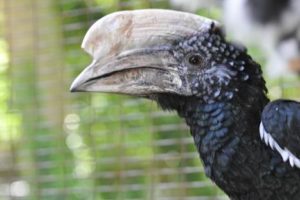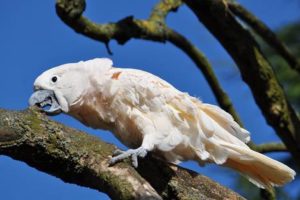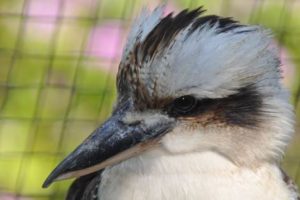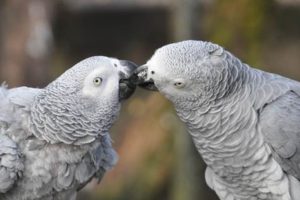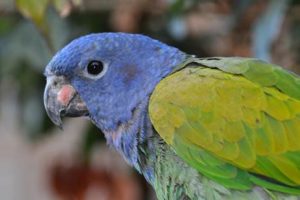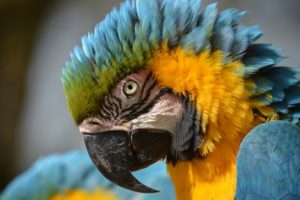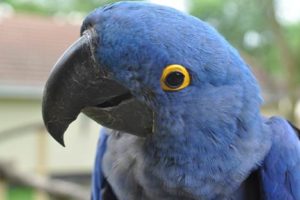Silver-Cheeked Hornbill
(Bycanistes brevis)
Native: East Africa
Habitat: Tall evergreen forests and mountains.
Status-
Captivity: uncommon
Wild: Common
Diet: Fruit,insects, small amphibians and mammals
Interesting Facts
Harking back to the Jurassic era, the appearance of the silver-cheeked hornbill gives you a glimpse into what life might have looked like in pre-historic times. They measure around 30 inches in length and have a very large cream coloured casque on the beak. This casque is noticeably smaller on females however, the reddish skin around their eyes makes identifying their gender a bit easier than most other types of bird. In the wild they usually live in pairs and sometimes roost in flocks of hundreds, often socialising with their close cousins the Trumpeter Hornbills. Their wings make a fierce whipping sound in flight as they slash the air, and their calls can sometimes sound similar to a crying baby.
Our Hornbills: Our small collection of hornbills have always been a source of shock & awe to our guests with their appearance in stark contrast to the rest of the birds we have on display. With the recent construction of a brand-new aviary, we decided to move both our sets of Trumpeter and Silver-Cheeked Hornbills into one enclosure, allowing them to socialise together exactly like they do in the wild. Interestingly, it is the male Trumpeter that has become the dominant of the four despite his smaller size, with his female taking great pleasure in harassing the staff as they enter to change the food bowls. Even more interestingly, our Silver-Cheeked Hornbills once resided in a European café where they would delight patrons by catching grapes that were thrown their way from nearby tables. You can hear their shrill laughter from almost every corner of the garden.

